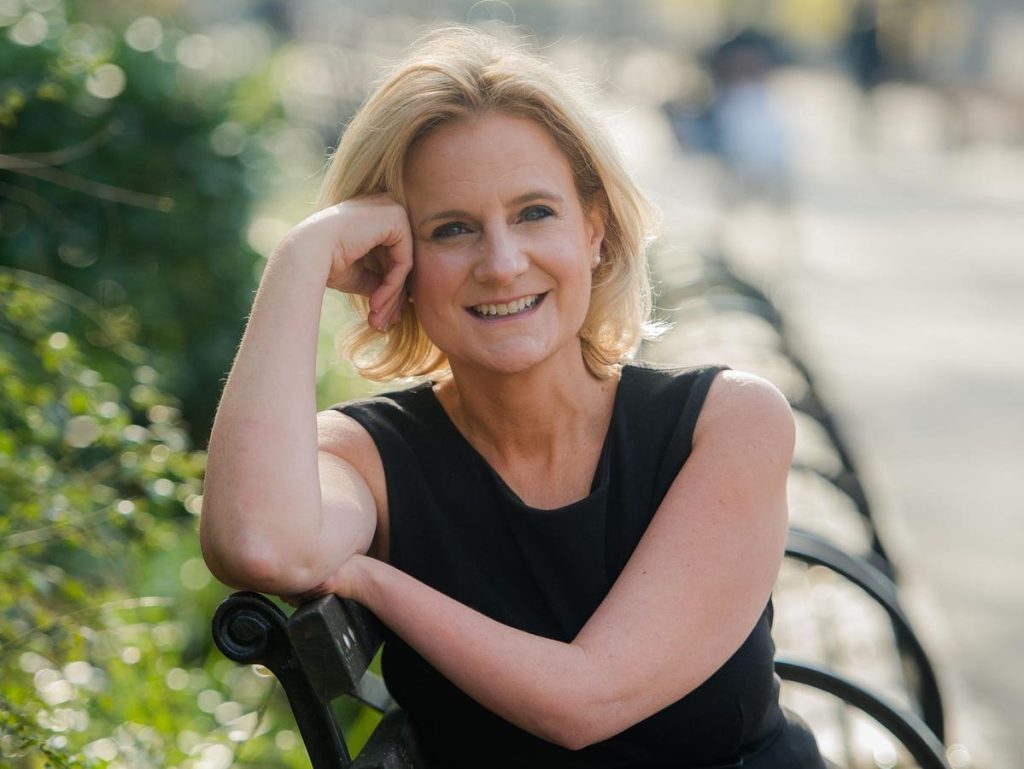When I met Ruth Rathblott in person, I was enraptured. She’s sharp, witty, funny and unapologetic. Her book, Singlehandedly: Learning to Unhide and Embrace Connection has become an international bestseller. Her message: stop hiding your disability, and instead be bold, be proud and approach those who don’t know how to approach you. Sometimes people don’t know what to say, what to ask, and there are awkward pauses or odd questions. It takes understanding on both sides to break long-standing stigmas surrounding disability.
Rathblott was born with a limb difference. In her TEDx Talk she shares how she hid her disability for over twenty years, describing it as “exhausting and lonely.” She was afraid that if someone found out they wouldn’t be her friend. That she wouldn’t be hired. That no one would want to date her. Being seen as normal would come to run her life. The longer she hid, the harder it was to stop hiding.
All it took for her to stop hiding was one person. She met someone who taught her how to love her hand, how to touch it, how to love the part of herself that she deemed unlovable for so long. And little by little, she let others in. “I connected with a group of people like me who had limb differences and it was super powerful to know– I wasn’t alone.”
I reached out to Ruth again recently to ask her why disability is often left out of diversity initiatives, how leaders can work to address this and how returning to the office is going to affect those with both visible and invisible disabilities. Here’s what she shared.
“There was a silver lining with the pandemic, we made things more accessible and we opened up opportunities for people with disabilities. We know, and it was proven that people can work remotely, and we tapped into a much larger talent pool, because we weren’t dependent on physical location. For some, there is now a forced return to work and they are fearful it will close doors again.”
She shared a story of a woman hired during the pandemic who hadn’t told her employer that she was immobile. The woman never mentioned her disability because she didn’t have to, and because she didn’t need to travel. Now she was living in fear of the day she was asked to come into the office, that her team would think she was “less than” or “high maintenance” because of the accommodations that would need to be made for her.
Rathblott’s advice to this woman was to get ahead of it and speak to human resources about a resolution, sharing her story and how much she truly enjoyed her job. If it’s a smaller company she advised going straight to the owner and having that discussion. “Leaders need to take the first step by being vulnerable and sharing. When employees feel safe, these conversations happen more organically.”
When it comes to the DEI conversation, those with disabilities, both visible and hidden, are often left out of the conversation. Rathblott says there’s a reason why: people are afraid to talk about disability. But the reality is disability can affect us all at some point of our lives. You may be born with one, acquire one later in life, or be a caregiver to someone with a disability.
Even leaders with disabilities don’t talk about it. One of the most famous examples is President Franklin D. Roosevelt. He was wheelchair-bound and the general public didn’t know. He gave addresses by radio and was photographed from a distance. Today, only 20% of C-suite leaders with a disability feel comfortable admitting their disability to a colleague.*
“It’s been a taboo topic for a long time. How do we unsay it? How do we own the word disability?” asked Rathblott. “I often hear, ‘I don’t like the work disability because of the ‘dis.’ My response, ‘Do you like the word distinguished? You’re not looking to take ‘dis’ out of that.”
She shared that, “90% of companies claim to prioritize diversity but only 4% consider disability in those initiatives.” What does it take to get measured? She said you need to put resources behind it. “For those with disabilities, it’s one of the hardest ERGs (employee resource groups) to start. There are those who aren’t ready to associate with it, and those who are afraid to be allies because they think others will think they have a disability. Leadership needs to own this piece.”
One in four American adults live with a disability, making it the largest minority group. It cuts across all lines. It doesn’t discriminate. As a consultant, she advises companies on pursuing the path to inclusion, but says first they need to do the “understanding” part, and that takes a concerted effort to do the research. She shared Emily Ladau’s book Demystifying Disability: What to Know, What to Say, and How to Be an Ally as a resource and 101 guide.
“There are times when I think maybe I should go and do something else, is anyone even listening? And then I get an email from someone who is hiding part of themselves. ‘Thank you for writing about this.’ All of us are hiding something. We need to release that fear of rejection.”
Rathblott is proud of creating this movement and shares that when we unhide we get the freedom to be ourselves. “People are in pain, whether it’s a disability or another aspect of their life, a bad relationship, scars on their body…if we can start to value difference and different experiences, that’s what diversity is to me.”
How do we bring disability and all the pieces together so that we feel safe? It starts with leadership and it’s a two-way conversation. Everyone wants to feel seen and heard, and feel like they belong and are accepted. When we hide parts of ourselves, we miss out. There is momentum in telling the truth.
Learn more of Ruth Rathblott’s story, you can find her book here.
Additional resources: Global Disability Inclusion and Disability:IN
*Source: The Valuable 500
Read the full article here










